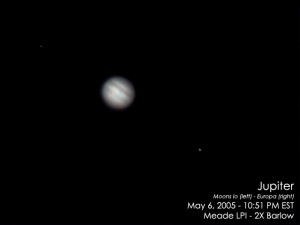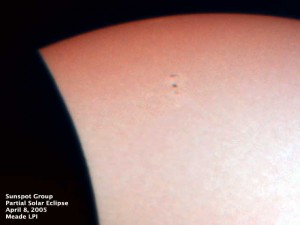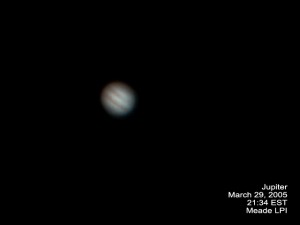I took the scope out tonight as it was a clear sky and moderately humid (which is less than the usual VERY humid). I tried some different shots of Jupiter tonight with both the Olympus D460 and the Meade LPI. My results were pretty much what they’ve been. I’m either at the limit of my scope or the atmosphere… of course I could just have no clue what I’m doing! The seeing was probably as good as it’s ever been here. There seemed to be very little atmospheric turbulence.
At any rate, here’s the D460 shot which is actually a stack of 5 different “exposures.” Exposures is in quotes because the D460 offers very little manual control over the camera so I use the term loosely.
Here is the first stack I processed from the LPI. This is an average of about 40 frames (I always forget to look and see exactly how many). The Great Red Spot is faintly visible in the lower center of the disk.
The single biggest problem I continue to have with all this exposure and focus. I’m either working through a LCD display on the back of a camera or my iBook (gamma set to red screen). In either case it’s almost impossible to be sure I’ve got the best focus and totally impossible to preview the exposure.
What? … people did this with film?!?!? Oh the woes of modern technology.






























